Cultivating medicinal herbs indoors increases the homegrown seasonings and herbal remedy ingredients available on the homestead year-round. Unlike traditional crops, herbs and medicinal flowering plants do not take up much space nor do they require deep soil to thrive.
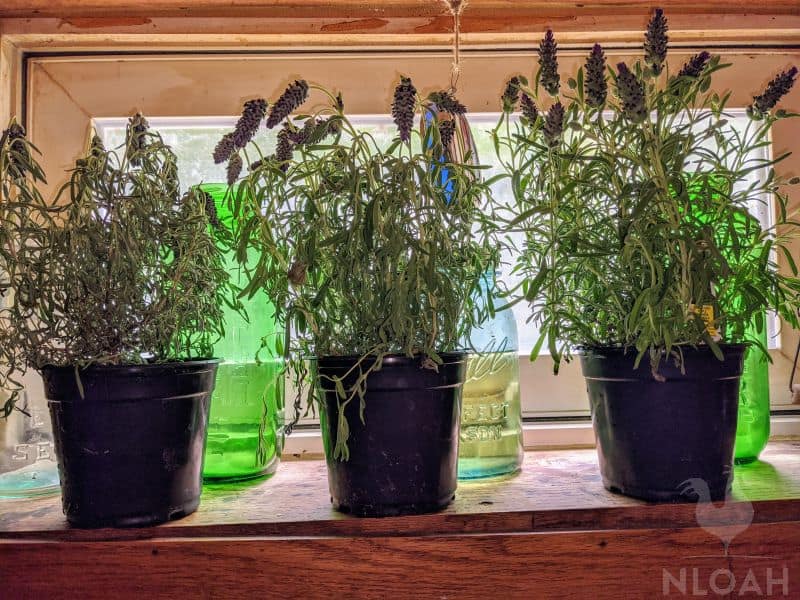
Windowsill herb gardens were once commonplace throughout America. Growing your own spices or even an aloe plant to use when minor kitchen burns happen, allows families to have spices and herbs always at the ready for a fraction of the price they’d buy them at a grocery store.
Many if not most of the medicinal herbs you should be growing indoors are also the same ones that you would snip off a sprig or two from an outdoor herb garden to toss in a soup, casserole, or homemade sauce.
Why Should You Grow Medicinal Herbs Indoors?
Reducing your reliance on commercially manufactured products, food and home remedy ingredients included, are main foundational components of homesteading. Cultivating your own medicinal and cooking herbs indoors is part of a year round growing operation.
Growing your own indoor medicinal herbs will brighten up the home during the long dreary months of winter and the early spring with the vibrant flowers many healing herbs produce once they mature.
Growing herbs and medicinal plants indoors also allows you to successfully cultivate non-native and dwarf varieties of herbs and healing plants that you would otherwise not be able to grow, use, and enjoy.
The pleasing scent of the herbs can also help cheer spirits with the mild fragrance during the time of the year that windows must remain closed due to the chilly weather outside.
When a member of the homesteading family wakes up with a little cough, an herbal indoor gardener can simply walk to the windowsill or the gardening table set up beneath grow lights, snip off a bit of thyme and mint and quickly create a healing herbal tea to soothe the sore and scratchy throat naturally.
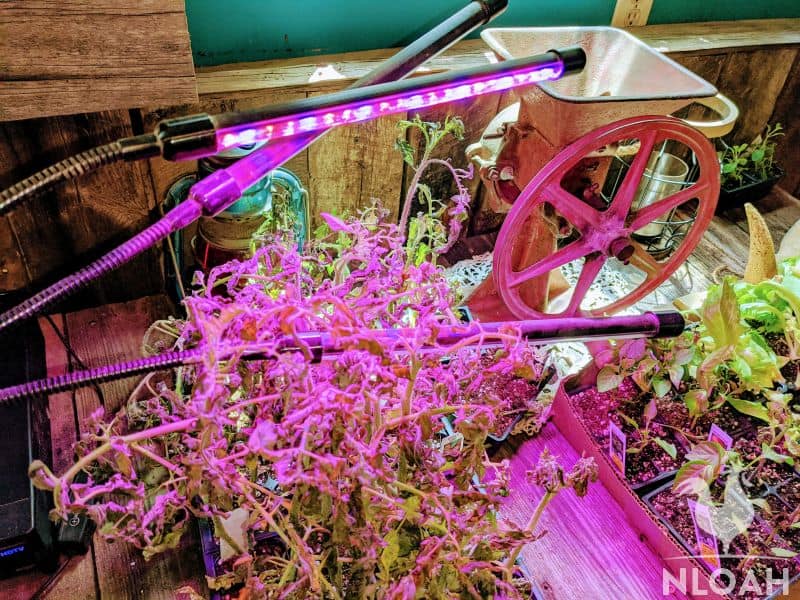
Space Requirements
Even homesteaders enjoying their land inside of a “tiny house” can grow a bounty of medicinal herbs indoors. While many herbs only need a windowsill, others require a bit more growing room.
Using the vertical space available on walls that get good sun or by mounting a grow light above them on a shelf – or even using a clip on grow light, will help maximize your growing space.
1. Lemon Balm
Lemon balm may be best known as an attractor of pollinators and a natural breath freshener, but this member of the mint family has far more beneficial uses around the homestead.
This sweet smelling herb has been used to naturally treat liver and bile issues, problems in the gastrointestinal tract, and as both a sleep and digestive aid.
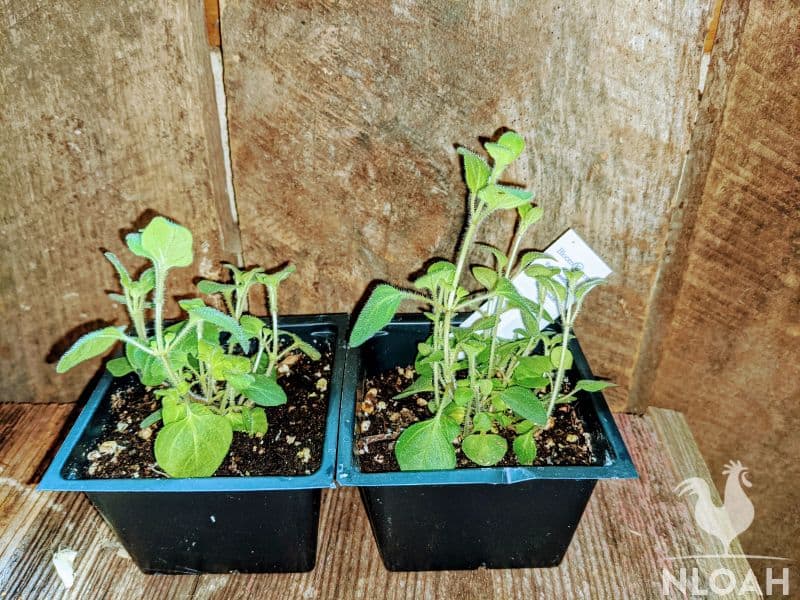
Lemon Balm Growing Tips
- Plant seeds about one fourth of an inch deep in potting soil and cover them only lightly.
- The seeds must be kept moist but not damp until they germinate.
- Space out seedlings to 8 inches apart and then thin them to 18 inches apart later as they grow towards maturity.
2. Turmeric
Turmeric should be a top priority for any homesteader who wants to create a robust indoor medicinal herb garden.
Turmeric is the only source in the world for the extremely potent antioxidant curcumin. To garner curcumin from the plant, you only need to harvest the dried rhizome (root cuttings) from it as it grows.
For thousands of years, the curcumin contained in turmeric has been a staple for both home and professional herbalists. Turmeric is an active base ingredient in natural remedies for muscle and joint pain, as well as inflammation.
It is also used to create Golden Milk, a delicious way to treat and soothe the symptoms most often associated with the flu and common cold.
Because of curcumin’s potential ability to improve blood vessel lining, turmeric is also sometimes used in natural preventative and heart disease fighting regimens.
This herb may also be found in herbal routines to thwart depression, to help treat Alzheimer’s disease, and more.
Turmeric Growing Tips
- You only need one turmeric root to start multiple cuttings to grow.
- Always plant turmeric roots in a soil that has been slightly moistened, but is not damp.
- Planting turmeric root is a lot like planting seed potatoes. Each part broken or cut away from the root must contain a bud.
- Put one turmeric root portion with a bud into a 5-gallon container or bucket that has drainage holes in the bottom. The general rule of thumb is, the larger the pot, the larger the turmeric root will grow.
- Plant the turmeric root two inches deep in the soil.
- Turmeric does best in full sun. When possible, relocating the indoor growing pots outside during the summer months can help produce a bumper yield.
- Watering only needs to occur about every two days in order to keep the soil moist. You can mist this medicinal herb in-between waterings if the soil starts to dry up. Never allow the dirt the turmeric is growing in to become soggy.
- Turmeric will mature in about eight to 10 months. Remember to save some of the harvested rhizomes to use to start new plants.
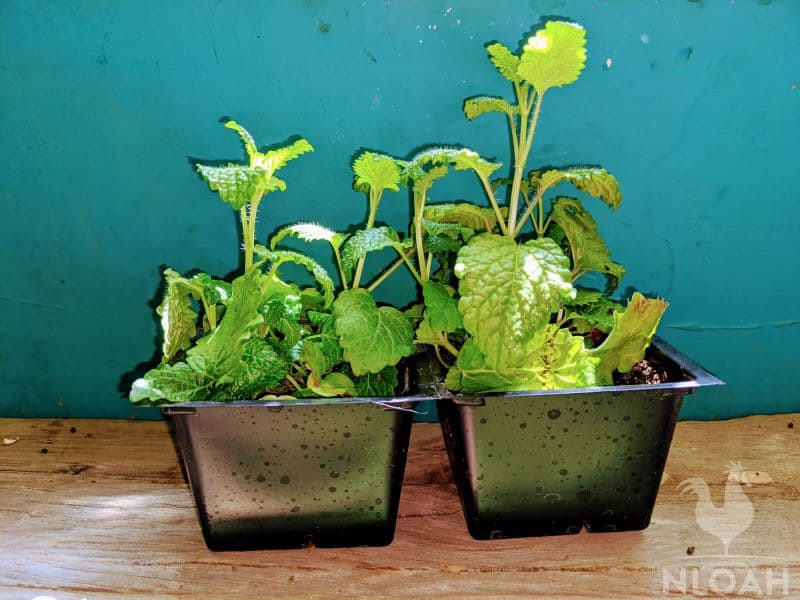
3. Spearmint
Spearmint can be used to flavor your homemade toothpaste, tooth powder, and mouthwash. This medicinal herb contains numerous antioxidant compounds such as rosmarinic acid, and flavanones like menthol and limonene.
Just two tablespoons of spearmint provides 2% of the recommended daily intake of vitamin C. Spearmint may help protect the skin against free radicals.
Spearmint Growing Tips
- Spearmint needs a nutrient rich soil, and either full sun or partial shade to thrive.
- Keep this herb well watered at the soil level, and thin out plants regularly to prevent a loss of soil nutrients, growing space, and to entice new growth.
- Sprigs from the spearmint plant can be pulled as needed while they are growing. When mature, spearmint plants are only a few inches tall.

4. Cilantro
Every part of the cilantro plant can be used in edible and medicinal recipes. Cilantro’s antioxidant compounds may help lower blood sugar, enhance the quality of sleep, and aid the digestive system.
Cilantro may also help pull toxins such as lead, mercury, and aluminum from the body. When consumed by mouth, cilantro has been used to treat toothache pain and the measles.
Cilantro Growing Tips
- Grow this herb in full sun to partial shade environments.
- Cilantro requires a moist and well draining soil in order to thrive.
- Plant the seeds about one fourth of an inch deep in the soil and six to eight inches apart.
- Planting cilantro every 14 to 21 days will keep a steady fresh supply growing throughout the year.
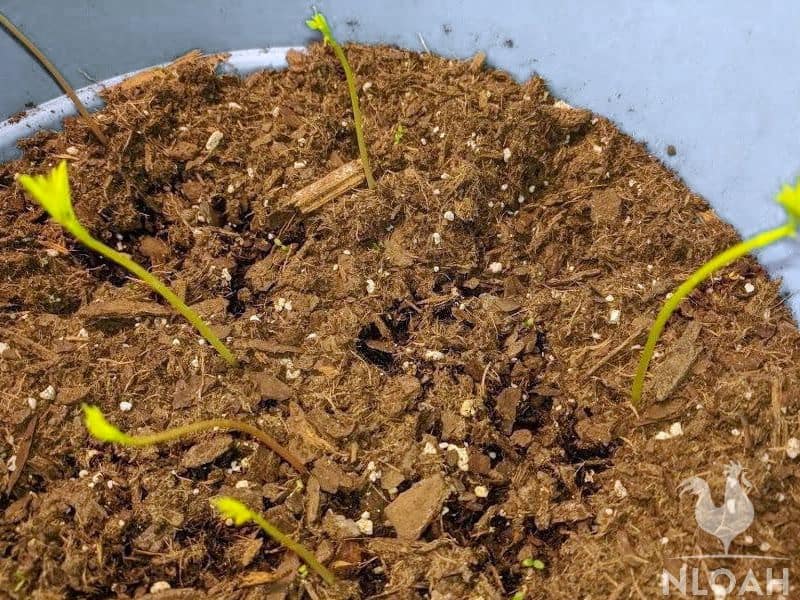
5. Dwarf Moringa Trees
All parts of the Moringa Tree, also known as the “Tree of Life,” is edible. as it has often been dubbed) is edible. Standard size moringa trees grow extremely tall, but only successfully grow in climates that hover well above freezing year round.
But, dwarf Moringa trees can be grown indoors anywhere, with their leaves and stems snipped for use at any time.
The leaves and stems from these trees contain protein, manganese, essential amino acids, as well as beta carotene. Moringa trees are a potent source of vitamins A, B, C, E, and K.. Both the gum and the bark from the tree can be used to make a medicinal herbal tea.
Dwarf Moringa Tree Growing Tips
- Dwarf Moringa tree seeds should sprout in about 14 days.
- Plant the one fourth to a half an inch deep in a well draining soil.
- In a growing container that is 16 inches in diameter, you can plant about eight seeds – but the Moringa will need to be thinned out as it becomes larger.
- Moringa cannot tolerate soffy soils. If the leaves begin to turn yellow, place crushed eggshells or a tablespoon of Epsom salt around the base of each plant to naturally infuse more magnesium into the soil.
5. Basil
Basil can be used topically to help heal minor wounds and burns. Because of its antiparasitic compounds, this medicinal herb may function as a natural deworming aid for both people and animals.
This common herb has also been used to treat kidney issues, stomach spasms, to treat loss of appetite, to deal with the retention of fluid, helping to remove warts, and to relieve head cold symptoms.
Mothers have used basil both before and after giving birth to enhance blood circulation and facilitate the flow of breast milk. Native Americans used basil to treat both insect and snake bites to draw out venom.
Basil Growing Tips
- To achieve the best results, plant basil one fourth of an inch deep in a moist and well draining soil that also boasts a neutral pH level.
- This medicinal herb grows best in full sun.
- Do not water the basil until the soil it is growing in is dry when touched. Always water at the base, and not from the top.
Learn more about how to grow basil here.
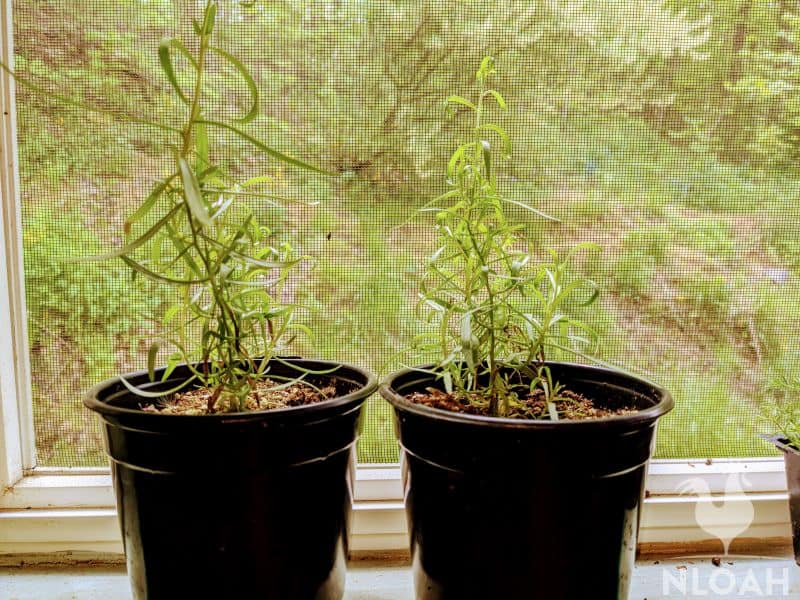
6. Tarragon
Tarragon is yet another herb that can offer a bevy of medicinal uses. Tarragon has been used to treat digestive system problems, toothache pain, to regulate blood sugar, to deal with water retention, to treat insomnia, increase appetite, and to start menstruation.
Tarragon Growing Tips
- The tarragon seeds should be sown about four to six inches deep in a medium sized container.
- This medicinal herb will thrive when planted in a lightweight and moist potting soil mix.
- A paper towel or cotton cloth should be used to cover the planted tarragon seeds until they sprout.
- Once the sprouts have grown to roughly two inches tall, thin them out, and transplant into their own individual containers.
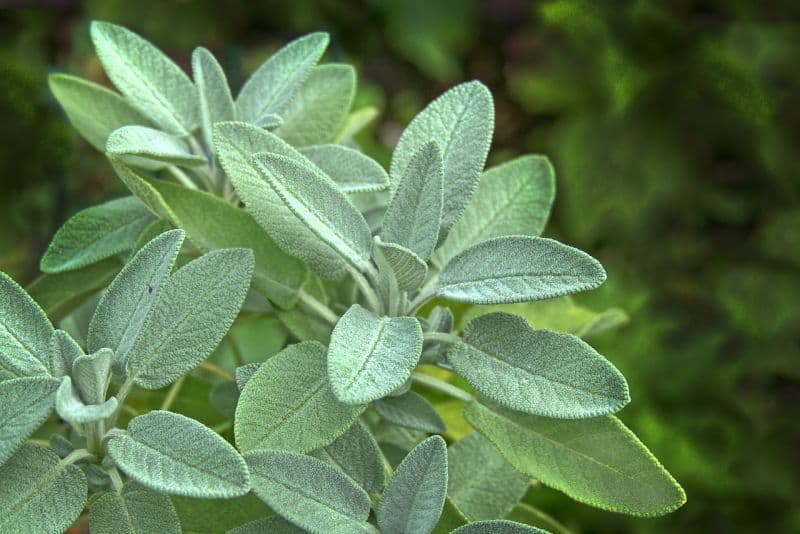
7. Sage
Not only do the leaves of the sage plant taste amazing when roasted, this member of the mint family can also be used to treat hot flashes, dyspepsia, memory loss, stomach upset, flatulence, diarrhea, heartburn, and bloating.
Some folks take sage to curtail both an overproduction of saliva and perspiration.
Sage Growing Tips
- Sage seeds should be grown in a loamy and sandy soil that is well draining, and has a pH level between a 6 and 7.
- This medicinal herb prefers a medium to full sun environment, and is an excellent kitchen windowsill plant.
- Seeds should be planted one fourth of an inch below the soil surface.
- Seeds can be difficult to start. When possible, start your sage plant from a cutting.
Learn more on the health benefits of sage here.
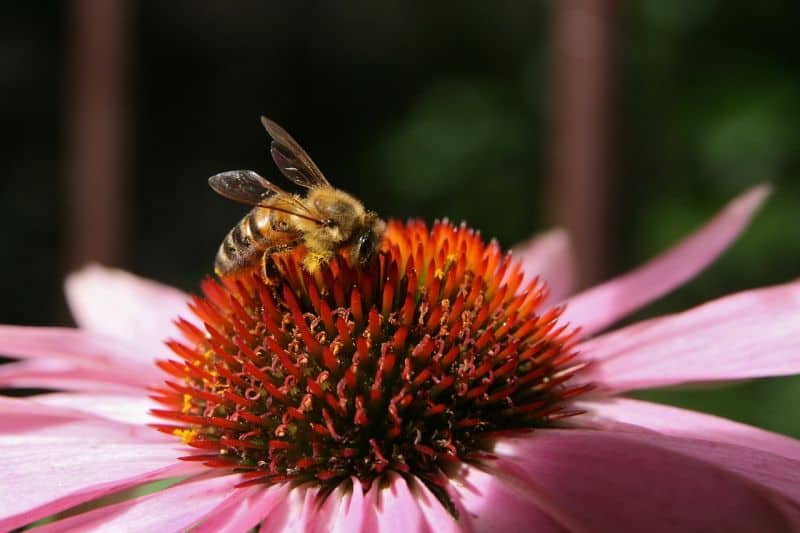
8. Echinacea
Growing echinacea inside will add beautiful color to any room while you are waiting for the plant to get mature enough to harvest the flowers to create a medicinal tea.
This healing herb has often been used to both prevent and treat respiratory illnesses, and to boost the immune system.
Echinace Growing Tips
- Echinacea can grow in any type of soil that is not soggy.
- The seedlings and plants prefer at least partial to full sun.
- The seedlings will need thinned as they grow because echinacea are clumping plnats – coneflowers.
- Plant seeds one fourth of an inch beneath the soil, and water every two days. Do not over-water this herb, or it will die quickly.
- This flowering herb can grow to be roughly two feet tall.
More on echinacea’s medicinal uses here.
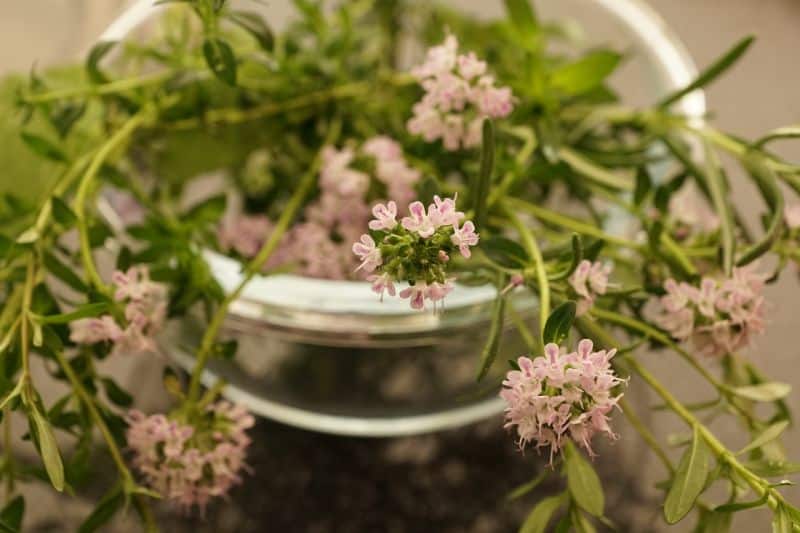
9. Thyme
Thyme is an incredible herb to grow and fits quite nicely in a windowsill. This medicinal herb is known for its antiseptic, antibacterial, and insecticidal compounds.
During the 1300s in Europe, thyme was brewed into a tea to help treat the painful symptoms of the “Black Death.”
Thyme tea may help boost the immune system, and help treat a persistent cough. The thymol natural biocide in thyme can help kill harmful and infectious bacterial organisms. You can read more about its benefits here.
Thyme Growing Tips
- Thyme grows well in even small containers.
- This medicinal herb prefers full sun, and a lightweight and well draining soil.
- Thyme should be planted one fourth of an inch deep in a soil that boasts a pH balance of 6.5 to 7.0
Learn how to grow thyme here.
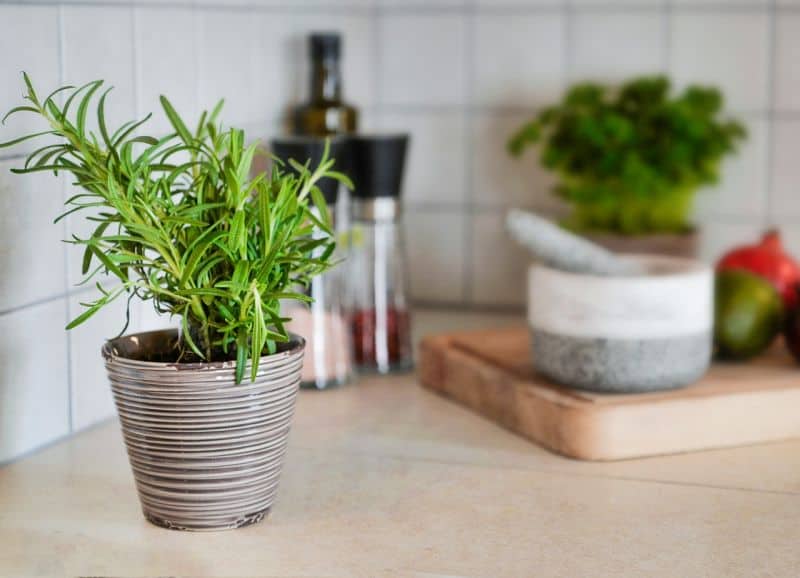
10. Rosemary
This classic medicinal herb is also a member of the mint family. Rosemary has been used by herbalists for centuries to soothe muscle pain, boost the immune and the circulatory system, enhance memory, and even increase hair growth.
It is also a natural breath freshener and wonderful ingredient to add into natural homemade toothpaste and mouthwash. Turning the rosemary you are cultivating indoors to make rosemary essential oil – which may help heal minor wounds, insect bites, and common skin irritations.
Rosemary Growing Tips
- Rosemary can be very difficult to grow from seed, but is an easy herb to grow from a sprout.
- Plant rosemary seeds by sprinkling them on the surface of the soil, and then covering them with about a half an inch of seed starter mix.
- The seeds should be kept moist, but not allowed to become soggy.
- It will take approximately two to three weeks for the rosemary seeds to sprout.
- Rosemary likes partial shade to full sun, and a lightweight, well-draining soil.
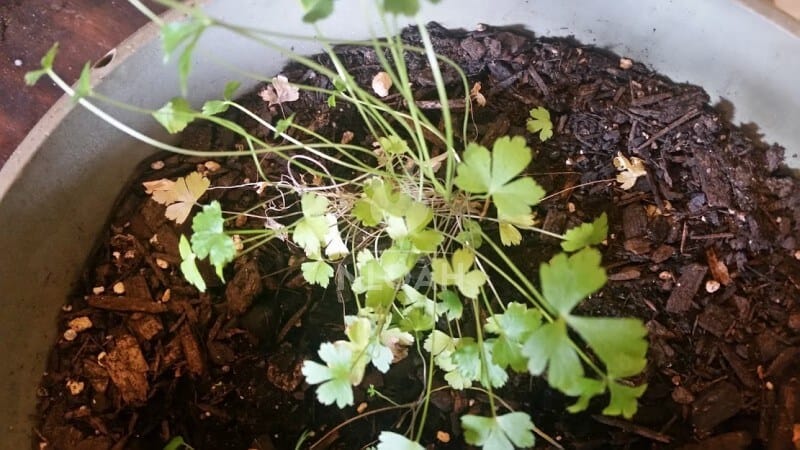
11. Parsley
The root, leaf, and seed from parsley plants have been used to make herbal remedies. Parsley is most often used to treat or prevent kidney stones, high blood pressure, bladder infections, gastrointestinal issues, coughs,urinary tract infection, constipation, asthma, and diabetes.
Parsley Growing Tips
- Plant seeds about one fourth of an inch deep in a rich and moist soil.
- If planting in larger pots, place each parsley seed or plant six to eight inches apart.
- Parsley grows best in partial shade to full sun.
Learn how to grow parsley in containers here.
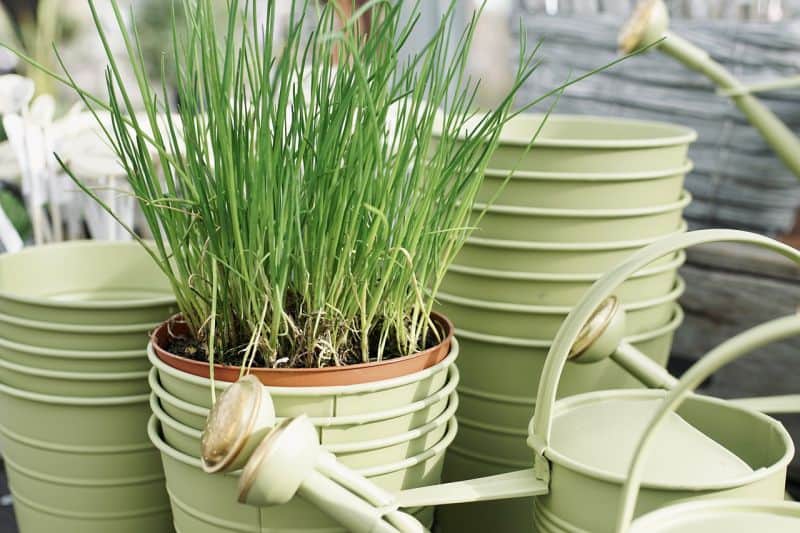
12. Chives
Chives are good for far more than simply stirring into sour cream. This herb boasts a significant amount of both vitamins A and C. Chives are also a good immune system booster.
Chives Growing Tips
- Chives grow best in a well draining and fertile soil.
- The soil should be kept moist at all times, but not allowed to grow soggy.
- While chives prefer full sun, they can grow quite well in partial shade as well.
- When mature, chive plants grow to be roughly one foot tall, and 12 inches wide.
Learn the ins and outs of growing chives here.
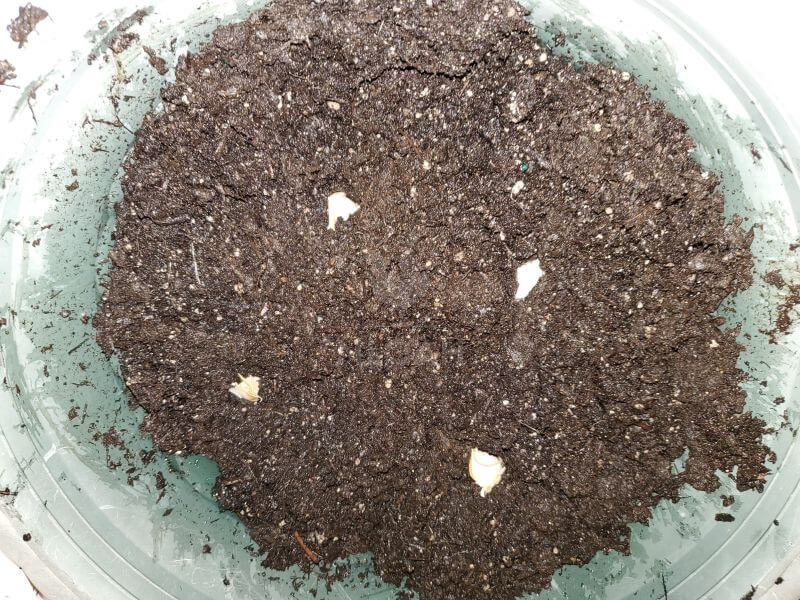
13. Garlic
If there is only the space and the budget to grow one medicinal herb indoors, garlic should be at the top of the list.
Garlic is an active natural base ingredient in around 95% of the home remedies that I made on a regular basis for our family and livestock.
Garlic is excellent as a general toxin remover from the body, and also superb at dealing with internal worm infestations, in my personal experience.
It can be used to naturally prevent and treat gum disease, respiratory issues and symptoms regularly associated with the common cold and flu, to naturally treat yeast infections, cold sores, and to help draw out venom from spider bites.
Garlic Growing Tips
- Plant garlic cloves root side down about five or six inches deep in a rich and well draining potting soil.The pointy narrow part of the garlic clove is the root.
- You can plant multiple garlic cloves in the same container, but make sure they are planted at least two inches apart.
Learn more on how to plant and grow garlic in containers.
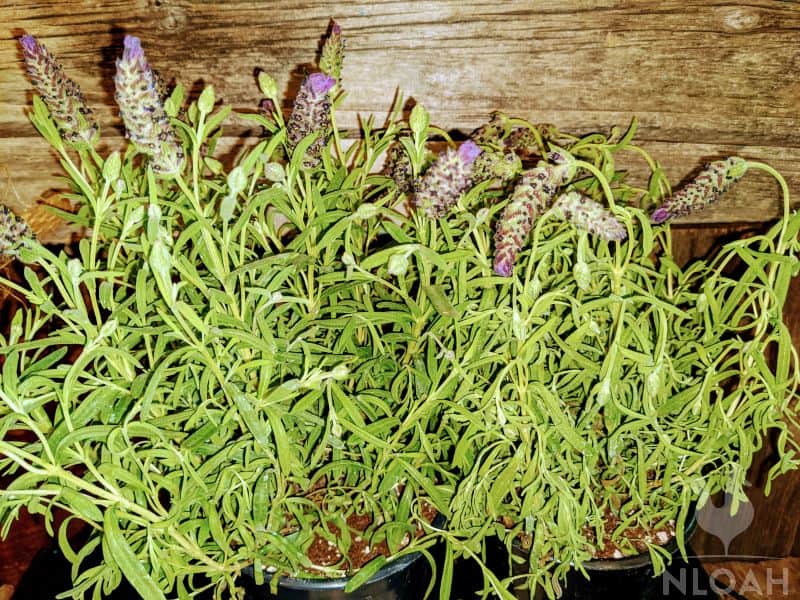
14. Lavender
Lavender’s scent is famous for calming and relaxing. Additionally, this medicinal herb can also help to ease the pain.
If applied topically to cuts, lavender has healing properties. Lavender as an essential oil is also used in many natural home remedies.
Lavender Growing Tips
- These plants will wither if exposed to too much humidity, and are over-watered. Always err on the side of caution when adding water to lavender plants.
- This medicinal herb thrives in a sand soil mix with a bit of gravel added in to make it drain better.
- Make sure to give plants room to breathe to prevent an increase in humidity level caused by overcrowding. Give the plants 6 hours or more of full sun each day.
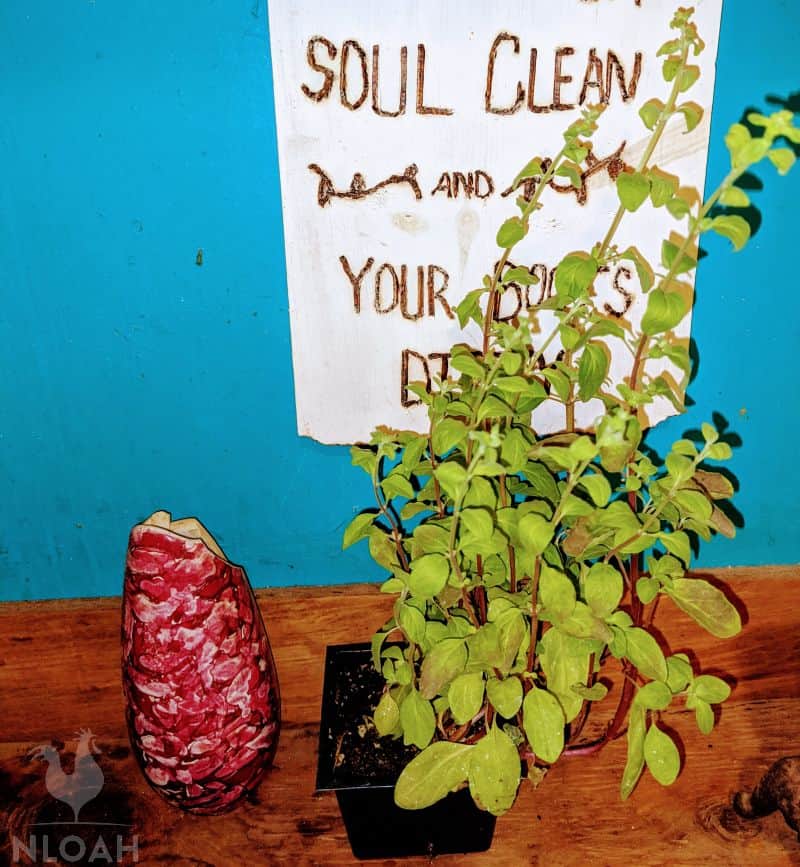
15. Marjoram
This beautiful herb plant has perhaps most often been used to create a natural “heart tonic” and a “nerve tonic.”
Marjoram has also been an active base ingredient in natural home remedies to treat gallbladder problems, dizziness, coughs, muscle pain, nervous headaches, stomach cramps, a runny nose, to enhance blood circulation, depression, migraines, nerve pain, and as a diuretic.
Marjoram Growing Tips
- Marjoram seeds should be gently pushed just beneath the surface of the soil.
- This herb grows best in a well draining soil and in full sun.
Learn how to grow marjoram here.
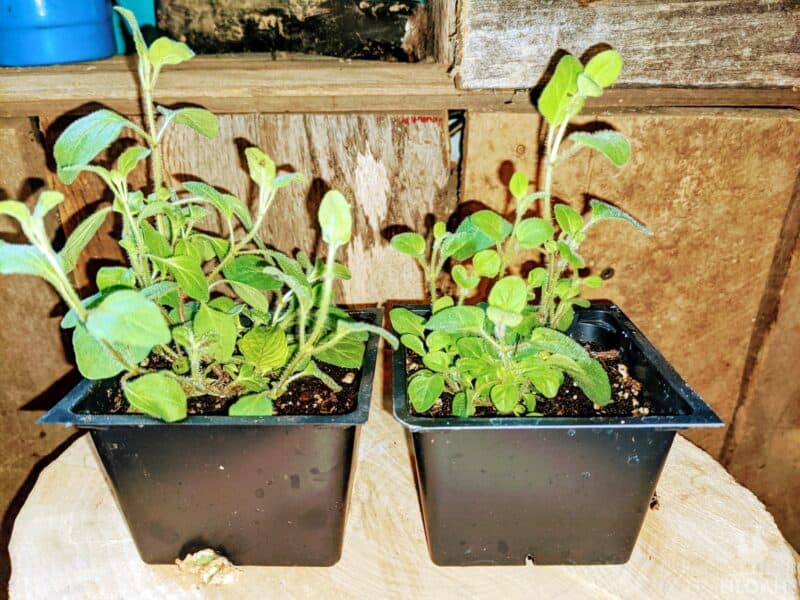
16. Oregano
This is another potent medicinal herb that should be on the short list when growing healing plants indoors.
Oregano has been used by herbalists to treat high cholesterol, to enhance gut health, as a pain reliever, as a natural antibiotic, to treat yeast infections, and as a natural pain reliever. Oregano may possess natural anti-inflammatory properties, as well.
Oregano Growing Tips
- This herb grows best in a well draining soil.
- Oregano should be placed in partial to full sun – growing the herb in full sun can pleasantly intensify its flavor.
- Never over water an oregano plant.
- Oregano should be placed six to eight inches apart in growing containers.
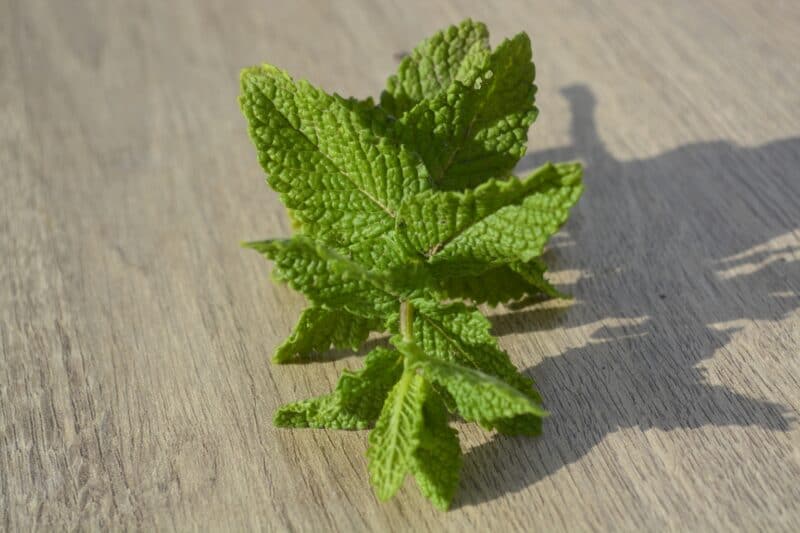
Peppermint
Peppermint can be brewed into a tea and consumed to help treat menopause, menstrual cramps, nerve and muscle pain, flatulence, bloat, indigestion, anxiety, indigestion, depression, diarrhea, and irritable bowel syndrome.
Peppermint can also be infused into an oil, and used as a base ingredient in topical natural home remedies.
Peppermint Growing Tips
- This medicinal herb prefers to be grown in partial shade.
- Peppermint should be grown in a well draining and moist but not soggy soil.
- Seedlings should be placed 18 to 24 inches apart.
- You can start a peppermint plant by transplanting runners as well as cultivating it from seed.
More peppermint growing tips here.
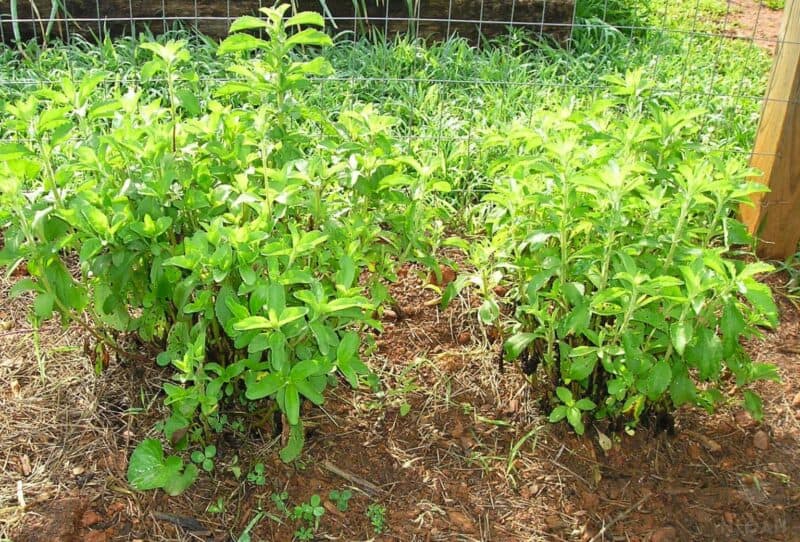
18. Stevia
This sweet tasting medicinal herb boasts anti-diarrheal, antimicrobial, anti-inflammatory, and possibly antitumor properties. Stevia is often used in natural remedies designed to treat or prevent high blood pressure and high insulin resistance.
Stevia Growing Tips
- Stevia needs 18 inches of space in a growing container, this is a bushy medicinal herb.
- Grow this sugar substitute in a well draining soil that is both loose and loamy.
- Stevia plants typically grow to be between 1 and 3 feet tall.
- Plant the seeds one fourth of an inch deep in the soil.
Learn more about how to grow stevia here.
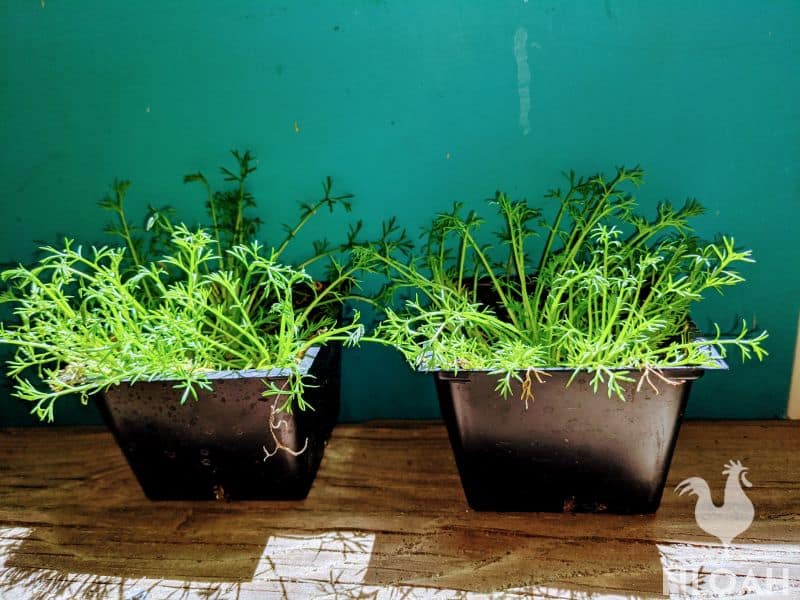
19. Chamomile
This simply beautiful healing herb has often been used to treat ulcers, hay fever, rheumatic discomfort, muscle spasms, minor wounds, muscle and tendon inflammation, menstrual pain, hemorrhoids, insomnia, and gastrointestinal disorders.
Chamomile is an excellent natural base ingredient in salves, creams, and lotions created to treat dry skin and sunburn.
Chamomile Growing Tips
- Chamomile thrives best when left alone as much as possible.
- This medicinal herb prefers partial shade, but can grow successfully in full sun.
- Chamomile soil should be dry, but not hard.
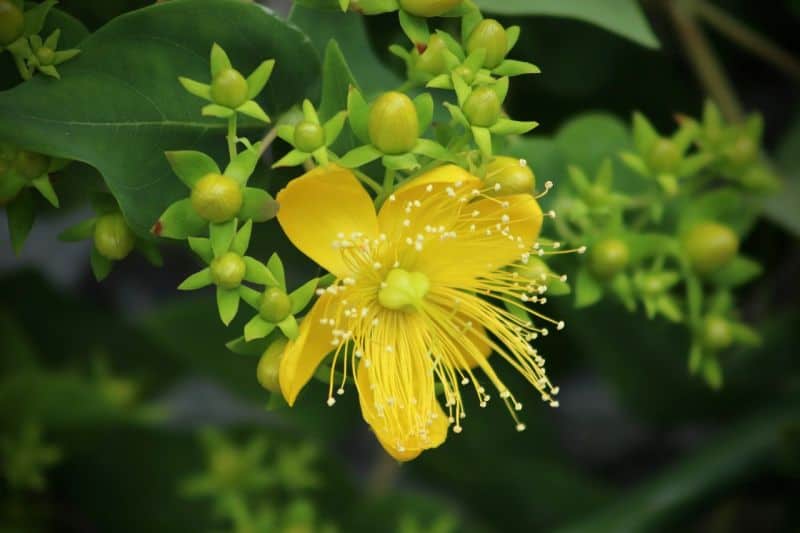
20. St. John’s Wort
This healing herb with bright yellow flowers has been used extensively by herbalists to treat menopause and menstrual cramps.
St. John’s Wort is also an active ingredient in natural home remedies designed to prevent or treat depression, attention deficit disorder, obsessive compulsive disorder, and topically for the healing of minor wounds and burns.
St. John’s Wort Growing Tips
- Plant this medicinal herb in a partial shade to full sun area.
- St. John’s Wort plants should be space between two to three feet apart if sharing the same container – this is a bushy herb that does well in a 5-gallon pot.
- It will grow in virtually any soil but thrives best in a well draining and moist soil that does not have a high alkaline percentage.
Indoor Medicinal Herbs Growing Problems And Tips
Growing herbs indoors is not wrought with many pitfalls, especially since herbs are generally easier to grow than garden crops and flowers. But, the one problem beginner indoor gardeners often deal with is the desire to tend to the plants too much.
Merely following the soil type, spacing, sun and watering guidelines is really all you need to do to have a successful indoor medicinal herb garden.
Now, just because you are growing indoors, either inside your home or a greenhouse, does not mean that insects will never be a problem. Take the time to learn what destructive insects are attracted to each herb, and how to deter them to better ensure all of the medicinal plants will thrive and reach maturity.
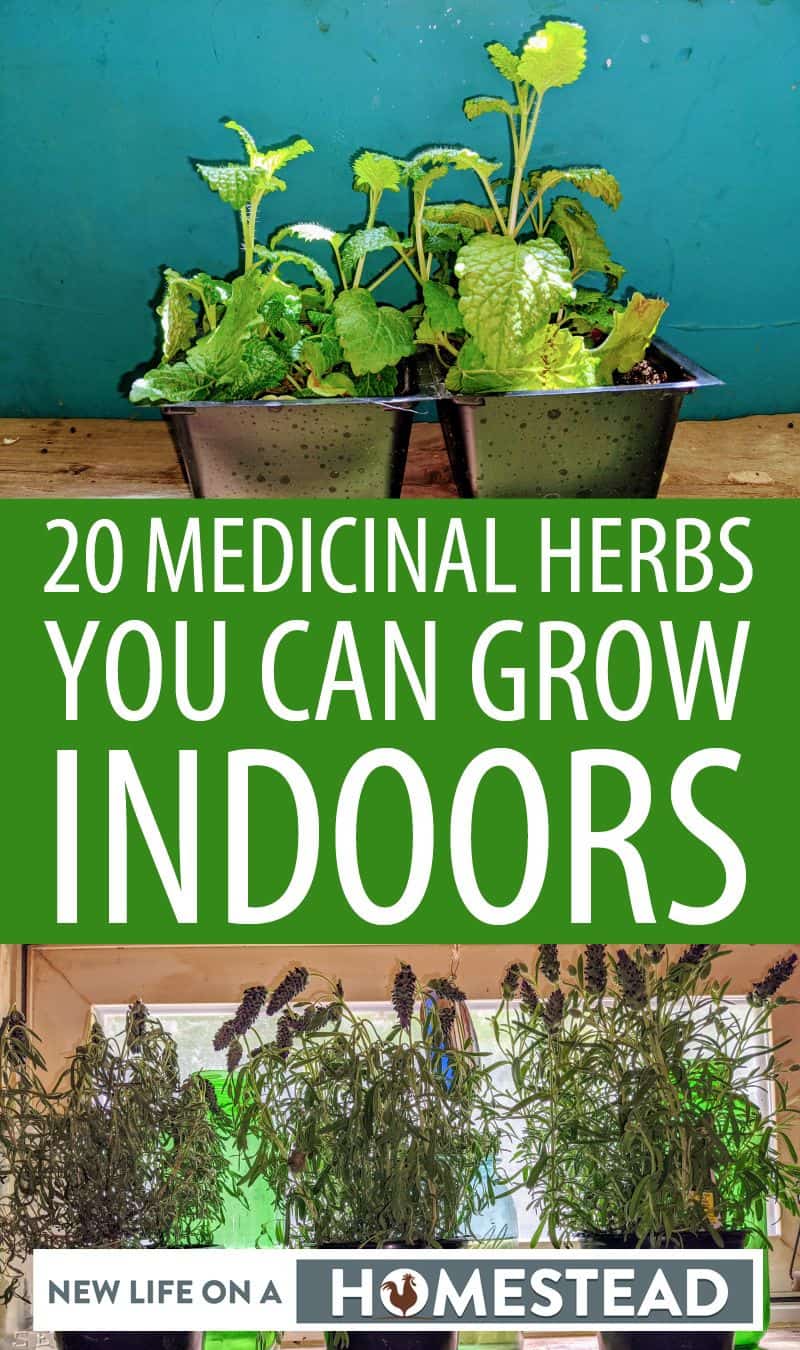

Tara lives on a 56 acres farm in the Appalachian Mountains, where she faces homesteading and farming challenges every single day, raising chickens, goats, horses, and tons of vegetables. She’s an expert in all sorts of homesteading skills such as hide tanning, doll making, tree tapping, and many more.
